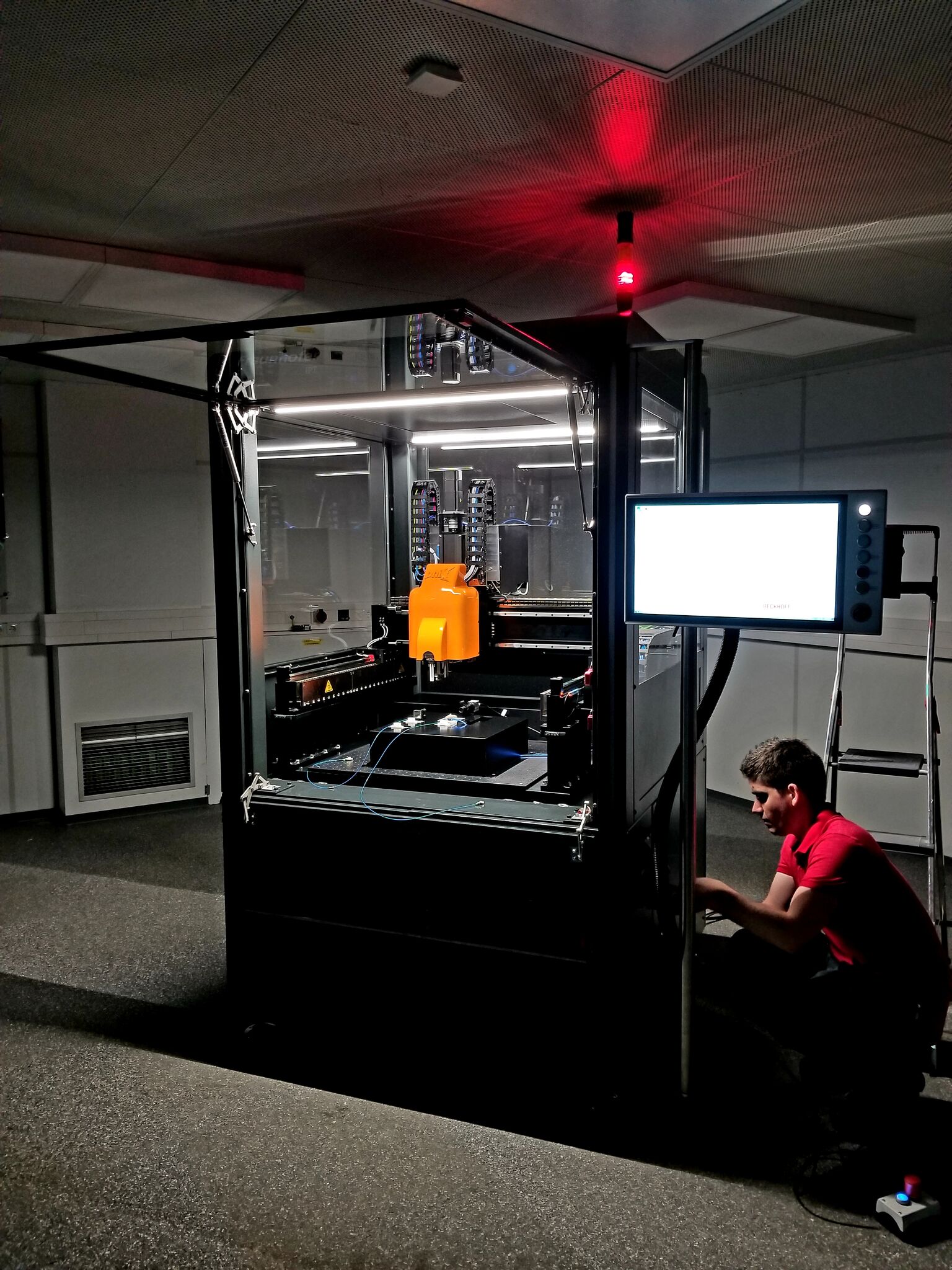New PIC Assembler Demonstrated at University of Twente

A new photonic integrated circuit (PIC) assembly machine was presented to the University of Twente (UT), Netherlands, by the Fraunhofer Project Center recently. The new automated assembler is designed to enable large-scale PIC production. The university and institute partners said in their announcement that this development is significant because high-precision work of this type has previously only been performed by hand for small production runs.
In a statement from the university on 18th June, UT and the Fraunhofer Project Center said, "Europe is at the threshold of a technological revolution "“ the application of the power of light to solve our greatest global challenges. As a fast, compact, energy efficient and therefore sustainable option, it is suitable for many applications and will be an essential component of the societal challenges of the future."
In its statement concerning the new assembler, developed for PHIX, the partners said the tool makes the connection between the chip and the outside world via 16 fine glass fibres, in a fibre array, which are placed in the correct position individually. Placing the glass fibres and the chip holders is the next step in the automation process. Up to now these have all been labour-intensive production steps, the high cost of which has posed a barrier to large-scale introduction.
The new machine is based on an assembly platform developed at the Fraunhofer Institute for Production Technology in Aachen, Germany. This platform is being developed further for photonics applications at the Fraunhofer Project Center at UT in a collaboration between the university, the Fraunhofer IPT and Saxion, focusing on advanced manufacturing.
The Fraunhofer Project Center collaborated closely with PHIX Photonics Assembly on this project. Albert Hasper, PHIX director commented: "The market demand for equipment based on photonics technology will see an exponential increase. This is only the beginning. The new machine will facilitate the widespread use of chips in detecting, generating, sending, measuring and managing light."



































